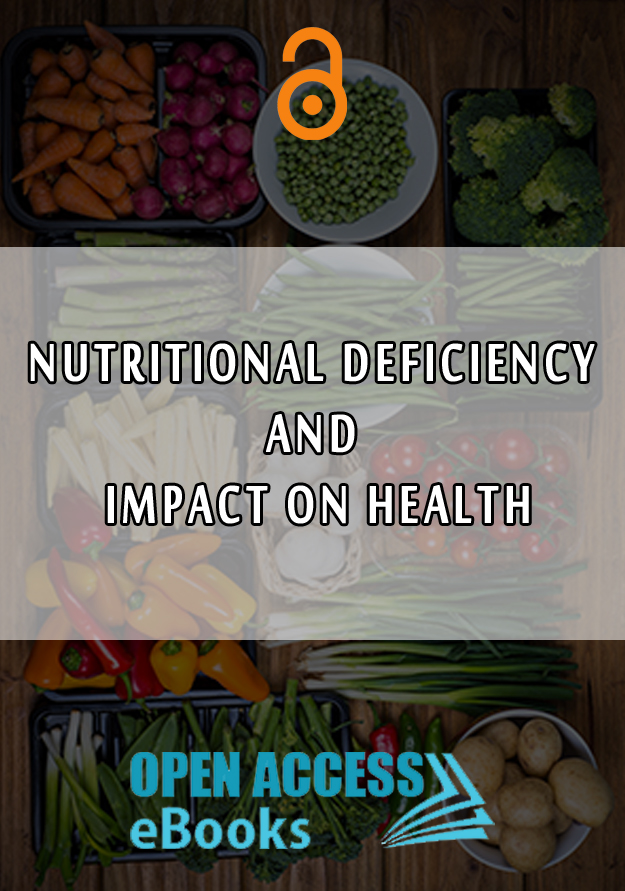List of Chapters
Iron Deficiency Anaemia: The Link Between Oxidative Stress and Bone Turnover
Author(s): Jorge Moreno-Fernandez, Julio J. Ochoa, Javier Díaz-Castro*
Iron-deficiency anaemia (IDA), one of the most common and widespread health disorders worldwide, affects fundamental metabolic functions and has been associated with deleterious effects on bone. On the other hand, oxidative stress results from an imbalance between the formation and neutralization of reactive oxygen species (ROS) and it is imposed on cells as a result of one or more of the following factors: an increase in oxidant generation, a decrease in antioxidant protection, or a failure to repair oxidative damage. During IDA oxidants are increased and antioxidants decreased, so the oxidative/antioxidative balance is shifted toward the oxidative side. Fe status is directly correlated with mineral bone density and Fe deficiency diminishes the mineral bone content, the bone mass and mechanical resistance. Fe deficiency diminishes bone matrix formation, reducing the amount of procollagen type I N-terminal propeptide released to the serum under these conditions.
Nutritional Deficiency and Nutrition Requirements in Critically ill Patients; Clinical Nutrition Guideline for Critical Care Management
Author(s): Naseh Pahlavani*, Alireza Sedaghat, Fatemeh Roudi, Samaneh Sadat Ayoubi, Najmeh Seifi, Maryam Mashmoul
Nutrition support has become a standard of care in ICU treatment protocol. The knowledge of metabolic requirements is essential to define an artificial nutrition regimen. Optimum and early nutrition either by Enteral (EN) or Total Parenteral Nutrition (TPN) can improve the ICU outcome critically ill patients are unable to eat. Nutrition authorities have long recommended providing generous amounts of protein and calories to critically ill patients, either intravenously or through feeding tubes, in order to counteract the catabolic state associated with this condition. In practice, however, patients in modern intensive care units are substantially underfed. Several large randomized clinical trials were recently carried out to determine the clinical implications of this situation...
Nutrition in Heart Failure
Author(s): Tsaloglidou Areti; Koukourikos Konstantinos; Tsiligiri Maria; Iliadis Christos; Kourkouta Lambrini *
The syndrome of chronic heart failure (CHF) in developed countries has taken the form of an epidemic. Patients with heart failure worldwide amount 23 million. The prevalence of the syndrome in the US, from 1% at the age of 50, exceeds 10% at 80 years. This is due to the increase in life expectancy as well as to the therapeutic developments of coronary artery disease. These developments have drastically reduced the mortality rate of CHF, but at the same time they have increased its incidence [1]. Despite the therapeutic efforts and developments in recent years, CHF continues to have a poor prognosis [2,3]...
Nutritional Aspects in Adults: The Impact of Good Nutrition on Health
Author(s): Adryana Cordeiro*; Andrea Ramalho
Biologically, an adult is a human being who has reached sexual maturity and in this context, the term adult additionally has meanings associated with social and legal concepts. A legal adult is a person of adulthood and is therefore considered independent, self-reliant and responsible.
Micronutrients Deficiencies in Early Life and Impact on Long-term Health
Author(s): Oana L. Pop, Romana Vulturar, Adriana Fodor, Adina Chis, Angela Cozma*, Olga Orasan, Adela V. Sitar-Taut, Doina Miere, Lorena Filip, Simona C. Heghes, Anamaria Cozma-Petrut, Carmen I. Muresan, Madalina A. Coman, Bianca O. Duran, Stefana A. Dobran, Cristina A. Iuga, Adriana G. Filip, Ramona Suharoschi
Nutrition in early life is of extreme important due to direct correlation with long-term increased risk of non-communicable diseases (NCDs). The fetal and postnatal level of micronutrients and polyunsaturated fatty acids (PUFAs) may alter metabolism, organ growth, development and function leading to increased risk of cardio metabolic diseases, obesity, renal disorders, respiratory disorders, metabolic syndrome, and, eventually to type 2 diabetes and cardiovascular diseases. This chapter is focused on the complexed effects of micronutrients (vitamins and minerals) and PUFAs deficiencies on the health and discuss the importance of supplementation and education programs as a health policy strategy.
Urinary Excretion of Major Minerals: Potential Indicators of Health
Author(s): Emanuella Brito, Camila Jaramillo, Shawn Kurian, Priya Krishnakumar, Amanpreet Cheema*
Major minerals are important for various biochemical functions in the body beyond maintaining fluid and acid-base balance. Urinary excretion of these critical minerals is generally an index of their intake. While it is normal to see urinary losses of minerals in healthy free-living individuals, the levels could indicate metabolic disturbances. Therefore, due to mineral’s involvement in several biological processes, their urinary levels could be exploited as indicators of well-being, and overall health status.
